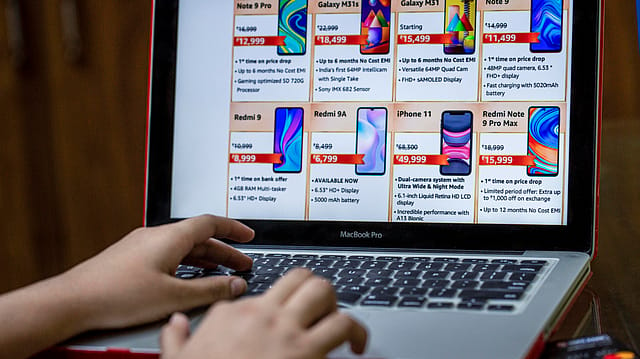Smartphones to sell more online this season: Report
ADVERTISEMENT

The Covid-19 pandemic is likely to give a boost to online sales for smartphones this festive season. A report brought out by techARC, a market research firm, points out that offline sales traffic for smartphones is likely to divert towards online marketplaces, which, in turn, would push up online sales.
The research report argues, further, that many offline stores are resorting to hybrid channel sales and leveraging apps like WhatsApp, Instagram, and Facebook to sell smartphones, as consumer enthusiasm remains tepid. These hybrid channel sales are expected to account for 6% of total smartphone sales this year in India.
The rest of the offline traffic is likely to divert to online marketplaces. techARC said that during the festive sales of October-December, e-commerce giants, Flipkart and Amazon, are expected to sell about 15 million smartphones, and this will account for over 36% of total expected sales for the period. The report adds that the total number of smartphones expected to be sold in 2020 are 128 million, of which 41 million will be sold in the last quarter of 2020.
“Samsung and Realme among likely top gainers. Micromax could also show some upward movement with its comeback. Xiaomi, OPPO, and vivo are expected to show stable outlook. Nokia, Lenovo (including Motorola), Poco among others set to sell less. OnePlus and Apple also likely to gain,” it said.
In fact, several experts have pointed out how the pandemic has been a blessing in disguise for e-commerce companies. A similar report by Counterpoint Technology Market Research earlier this year predicted that the after-effects of the pandemic would allow e-commerce giants—not just Flipkart and Amazon, but also online versions of offline retailers like Croma, Vijay Sales, and Reliance Digital—to together corner somewhere close to 53% of market share, as far as smartphones are concerned, during the October-November festive months.
December 2025
The annual Fortune 500 India list, the definitive compendium of corporate performance, is out. This year, the cumulative revenue of the Fortune 500 India companies has breached $2 trillion for the first time. Plus, find out which are the Best B-schools in India.
Prachir Singh, a senior analyst at Counterpoint, argues that the pandemic is but one reason that is fuelling this move towards e-commerce amongst consumers. "More and more sales are moving online. This is because of mainly two reasons: One is Covid-related. People are not able to move about and are depending more on online platforms. So, that is one reason. Another reason is that this time, Flipkart and Amazon have focussed a lot on the affordability of the devices. Be it LG, Xiaomi, or Realme, every brand was focussed on affordability," he says.
Singh may have a point. The online growth of smartphone sales isn't a new phenomenon. In fact, according to data culled by International Data Corporation (IDC), a global market intelligence firm, the online growth has been consistent. In 2019, the online contribution to smartphone sales stood at 41.7% from 38.4% in 2018. IDC expects this figure to touch anywhere between 46% to 50% this year, the highest ever.
As far as this year is concerned, there is another factor to contend with: pent-up demand. "Over the last few months people have saved by not making any unnecessary purchases and they are now spending. From April to July, people refrained from buying and that has led to a pent-up demand," Singh says.
techARC's report points out that Flipkart's growth rose by at least twice in customers visiting the mobiles category during 2020, and the premium segment of smartphones saw a growth of 3.2 times, which was predominantly driven by Apple, Google, and Samsung phones.
"Covid-19 has taught us all-new ways of doing business. The pure-play offline channel has gone hybrid and is using online to aggregate demand complimented by same-day home deliveries even in non-metro cities and towns,” says Faisal Kawoosa, founder and chief analyst, techARC.
Kawoosa said smartphones have been overused since the start of Covid-19. “Average usage of smartphones has doubled. This is pushing a considerable user base to go for early replacements and upgrades,” he said.
The report said that the online and offline channel contribution is 49% and 45%, respectively. A lot of offline sales will turn to hybrid channels in the festive season. “Brands like Xiaomi, vivo, and Samsung have already announced their own models of hybrid channel sales. However, the growth in hybrid models comes from offline retailers using online for demand aggregation with limited geographic catchment. The premium segment, ₹25,000-₹50,000, will remain in spotlight,” the report said.
